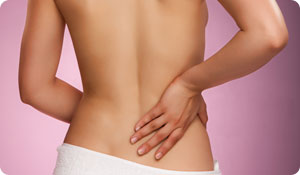
DISH, or diffuse idiopathic skeletal hyperostosis, is a type of arthritis that primarily affects the upper back. It occurs when the ligaments that attach to the spine harden and calcify, often causing stiffness and pain in affected areas. DISH sufferers also may have pain in their necks and lower backs, or even beyond the spine in areas such as the feet, knees, hips, arms, and hands.
Who gets DISH?
There's evidence that people who over long periods use medications known as retinoids, which are synthetic versions of Vitamin A, are at increased risk of developing DISH. Retinoids include Accutane, a drug used to treat severe acne, and topical skin creams commonly used to slow the aging process. Whether Vitamin A itself represents a risk is unclear. People over age 50 are more likely to have DISH, and men are much more likely to have it than women. Having type 2 diabetes also may be a risk factor, as is obesity. Generally, diseases that cause elevated insulin levels appear to raise the risk of developing DISH.
Can DISH cause complications?
While some lucky DISH sufferers have no apparent symptoms, others experience serious problems. If the calcification in the ligament is extensive, a patient may be unable to move the affected area without difficulty. In severe cases, an affected ligament running up the spine can put pressure on the spinal cord and cause paralysis. If the neck is affected, bony spurs that form may press against the esophagus and affect the patient's ability to swallow. They may also cause hoarseness of the voice or sleep apnea.
How is DISH treated?
While there is no cure for DISH, the condition often can be treated effectively with pain medication, either over the counter or prescription. Cortisone shots can help with stiffness. Severe cases that interfere with swallowing or breathing may require surgery to remove the nodules causing the problem. As with other types of arthritis, regular exercise can help keep the body and joints flexible. And heat or cold packs can alleviate pain (some sufferers like to alternate between the two).





